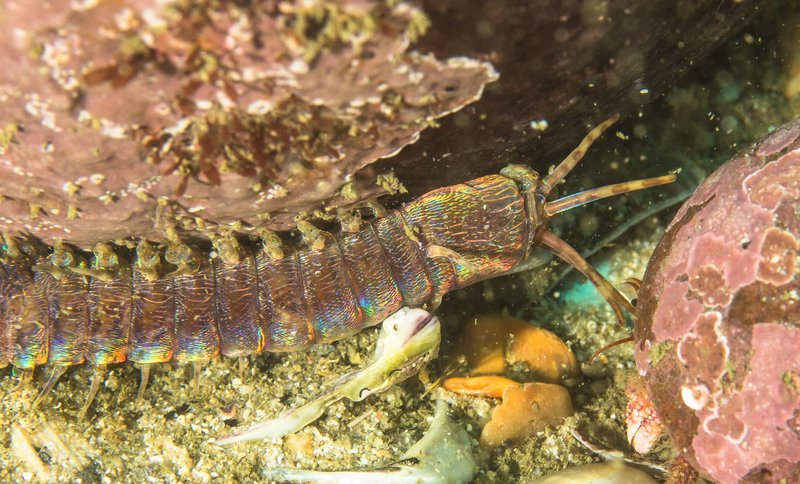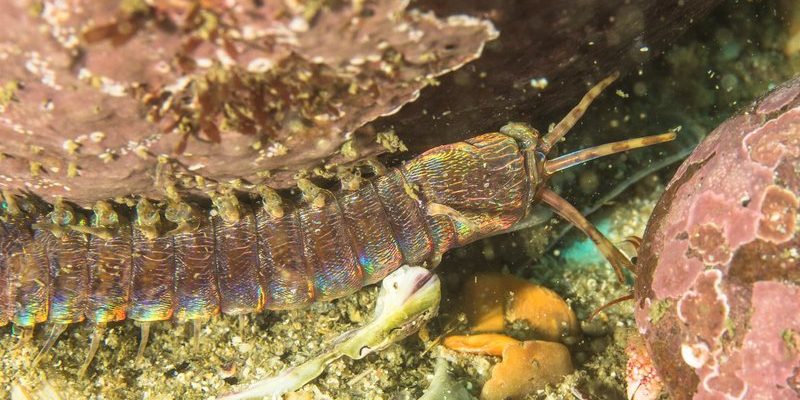
What Is a Bobbit Worm?
Before we get into the nitty-gritty of identification, let’s take a moment to understand what a Bobbit worm is and where it comes from. These worms are part of the **annelid** family and share some traits with earthworms, but they are much more colorful and dynamic in their environment. Found mostly in the warmer waters of the Pacific and Indian Oceans, Bobbit worms are often considered a part of the reef ecosystem.
These fascinating creatures are known for their **burrowing** behavior. They typically hide in the sand or crevices and only expose their heads to catch unsuspecting prey. Think of them as the ultimate hide-and-seek champions of the ocean! Their bodies are segmented and can vary in color, often displaying greens, browns, or even shades of red and blue, which can make identification tricky.
Physical Characteristics of Bobbit Worms
When it comes to spotting a Bobbit worm, it helps to know what you’re looking for. These worms can be quite unique in appearance. Here are the key features to keep an eye out for:
- Length: Bobbit worms can grow anywhere from a few inches to over 10 feet long. This length can make them challenging to spot in smaller tanks.
- Body Segments: Their bodies are made up of many segments, giving them a segmented look. The segmentation becomes more visible as they grow longer.
- Coloration: Bobbit worms can display a variety of colors. While they are often found in darker shades, bright colors can make them stand out against the substrate or live rock.
- Feeding Appendages: When their heads are visible, you’ll notice a set of feeding appendages. These can resemble tentacles and are used to capture prey.
Once you familiarize yourself with these characteristics, identifying a Bobbit worm becomes easier. But remember—just because a worm looks like one doesn’t mean it’s necessarily a threat.
Where to Look for Bobbit Worms
Now that you know what to look for, let’s talk about where you might find these creatures. Bobbit worms love to hide, so you will need to focus your search efforts in specific areas of your aquarium:
1. **In the Sandbed:** Bobbit worms often burrow into the substrate. If you notice unusual holes or tunnels in the sand, that could be a clue.
2. **Inside Live Rock:** During your routine inspections of live rock, be wary of any unusual movements or quick retreats. Bobbit worms can retreat into their burrows at lightning speed.
3. **Coral Caves or Crevices:** If you have live corals in your tank, check their base or nearby rock for signs of the worm. Their presence can sometimes coincide with the health of nearby corals, so keep a close eye.
Here’s the thing—Bobbit worms prefer dark, secluded spots, so you might not spot them unless you’re actively searching.
Behavioral Signs of Bobbit Worms
Aside from their physical characteristics, observing the behavior of your aquarium’s inhabitants can also indicate the presence of a Bobbit worm. Here are some common behaviors to look for:
- Quick Movements: If you notice multiple smaller fish suddenly darting away from a specific area, this could signal that there is a predator nearby.
- Missing Fish: If your fish are mysteriously disappearing, it might be worth investigating further. Bobbit worms are known to capture their prey, so missing fish could be a sign.
- Visible Tunnels in the Substrate: If you see holes in the sand or substrate, particularly leading towards rock or corals, that’s a potential sign of burrowing activity.
It’s critical to monitor these behaviors regularly, especially in a reef aquarium, where balance is essential for the health of your aquatic life.
Distinguishing Bobbit Worms from Other Marine Species
Identifying a Bobbit worm can sometimes be confusing, especially since other marine worms might share similar traits. Here’s how to differentiate a Bobbit worm from other common species you might find in your tank:
1. **Fireworms:** Unlike Bobbit worms, fireworms are usually shorter and are known for their painful sting. If you see a worm that has bright bristles but doesn’t have the characteristic elongated body of a Bobbit worm, it could be a fireworm.
2. **Flatworms:** These creatures tend to be flatter and are often smaller. If it appears to be closer to a pancake shape rather than long and segmented, it’s probably not a Bobbit worm.
3. **Sand Eel Worms:** These have a slender, long body but usually lack the segmented appearance of the Bobbit worm. They tend to be lighter in color too.
If you’re ever in doubt, taking a photo and doing a quick online search can help clarify what you’re looking at.
What to Do if You Find a Bobbit Worm
So, you’ve identified a Bobbit worm in your reef aquarium. What’s next? It’s important to approach the situation thoughtfully. Here are some options:
– **Leave it Be:** If your aquarium is thriving and no fish are disappearing, it might be best to leave the Bobbit worm alone. They can actually help keep your tank clean by consuming detritus and organic waste.
– **Remove It:** If the worm is causing problems, like eating your fish or damaging coral, you may need to consider removal. This can be a tricky task since they’re deeply buried. One common method is to use a trap or even lure it out with food.
– **Consult with Experts:** If you’re unsure about how to handle the situation, consider reaching out to a local aquarium club or a marine biologist for advice.
Preventing Bobbit Worm Infestations
If you want to prevent a Bobbit worm from making your aquarium their home, there are a few steps you can take:
- Avoid Live Rock from Unknown Sources: When adding new rock or corals, ensure they come from reputable sources that test for hitchhikers.
- Regular Monitoring: Frequently check your tank and maintain water quality. A healthy environment may help deter unwanted visitors.
- Use a Quarantine Tank: When introducing new organisms, consider using a quarantine tank first to monitor for any pests or issues.
Keeping your aquarium clean and regularly checking for any signs of unwanted creatures is key to maintaining balance and beauty.
In summary, learning how to identify a Bobbit worm is not just about recognizing a species in your aquarium; it’s about ensuring the harmony of your underwater community. By knowing what to look for and how to manage these fascinating creatures, you can enjoy the vibrant life that makes reef aquariums so captivating. Whether you decide to keep or remove a Bobbit worm, you’ll have the confidence to make informed choices for your aquatic friends.

